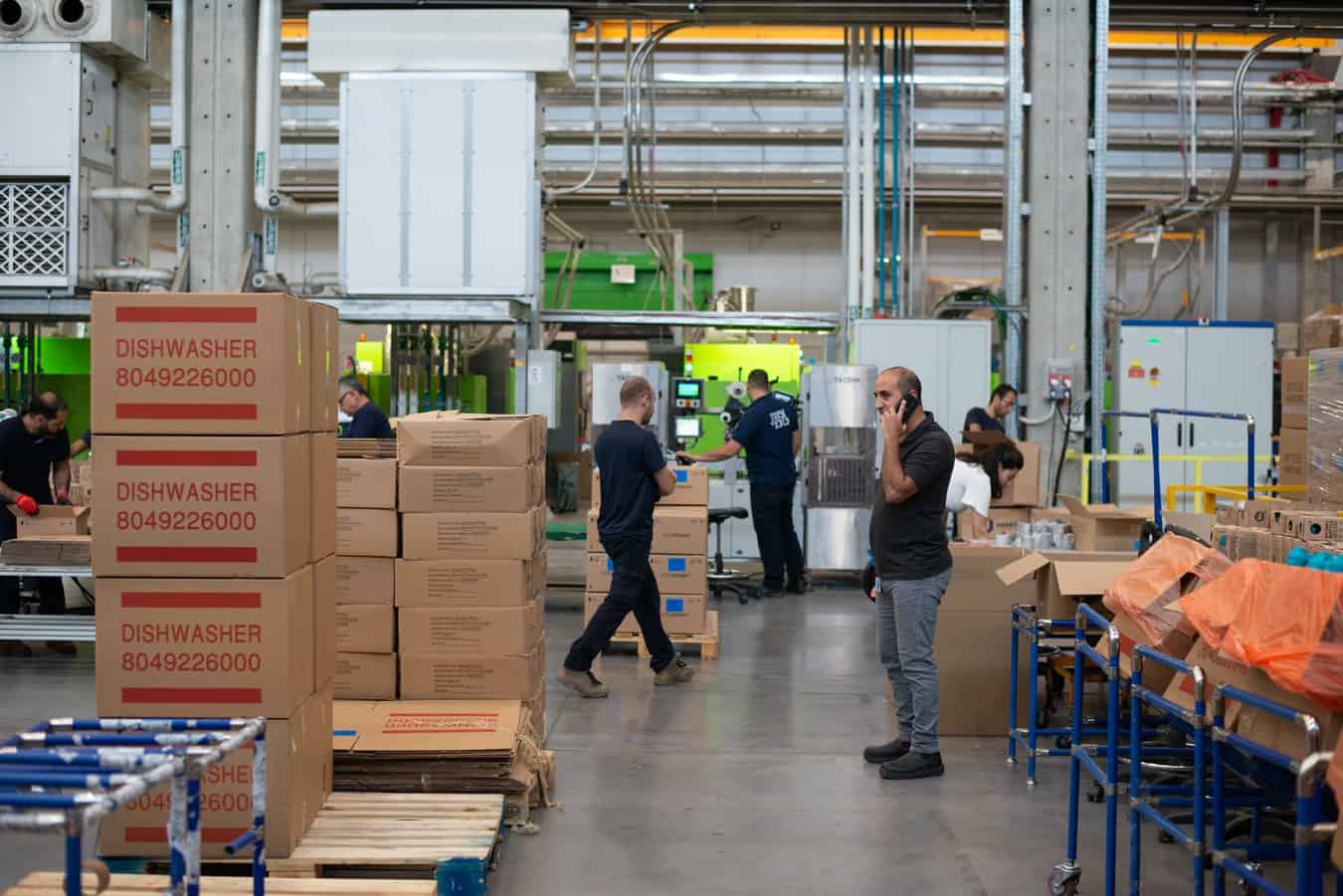If you have an e-commerce business, perhaps you’re outsourcing warehousing and shipping. Shipping products to this center is arguably one of the most important steps to ensure items are able to be packed, processed and shipped out to your customers. Freight itself can be defined as the products or goods that are transported either from truck, train or possibly ship or plane. This freight shipping process is how your business’s goods are transported to the fulfillment center you are choosing to work with.
With many fulfillment centers to choose from, both large and small, it is vital to work with a center that has had years of experience, provides great customer service and knows what they are doing!
What Is a Fulfillment Center?
A fulfillment center is a physical location where a third-party logistics provider (3PL) can fulfill orders for eCommerce retailers. Fulfillment centers are important for getting online orders to their customers in tack, and on time. These centers also relieve stress for eCommerce companies who may not want to worry about the packing, processing, and shipping process of orders.
A very well-known example of a fulfillment center is Amazon. While Amazon may not always have been known for their amazing customer satisfaction, they have recently made quite the flip on this note. Amazon has begun seeing a positive impact on the retail industry as shopping, receiving and even returns are made simple for customers.
Amazon is certainly a large fulfillment center that many people are aware of, but does this necessarily mean they are the best center for your business?
There are a number of 3PL options you can use when choosing a fulfillment center to work with.
Read further to learn more about common requirements when shipping to a fulfillment center.
How Shipping Freight to a Fulfillment Center Works
Many e-commerce businesses find it in their best interest to work with a fulfillment center. The fulfillment center will take care of the warehousing and order fulfillment so your company won’t have to directly handle it. Order fulfillment is the general sense of the process from selling a product to the delivery of a product, though an e-commerce platform in this case. To put it simply, order fulfillment is the process of receiving goods, processing them and then delivering orders to the intended customers.
E-commerce businesses will ship their products to a fulfillment center and the fulfillment center will then be in charge of storing the products, processing ordering and shipping out to customers.
Freight Forwarding
Freight forwarding is typically explained as when a company organizes shipments for either individuals or corporations in order to get the products to their final point of distribution. It is common for eCommerce retailers to ship small orders, however it is also possible for them to ship entire containers of goods as well. ECommerce retailers can either contract with a carrier or often multiple carriers in order to move their goods.
The Disadvantages of Freight Forwarding
A typical area of concern that customers complain about when ordering through Amazon are mistakes with their orders. Customers often receive the wrong product, incorrect quantities, or there are issues with shipping times and receiving their products. This is where the main disadvantage of freight forwarding arises. When shipping directly to an Amazon fulfillment center, there is no chance for retailers to catch these mistakes in customers’ orders.
Along with mistakes with orders, the loss of products and costs are two more disadvantages of freight forwarding. Most freight companies do not offer insurance, and there is a chance that products could get lost through travel. An example of this can also be expressed through Amazon. The corporation charges retailers extra money for storage if the products come in a shipping container. Plus, if inventory is more than five months old, Amazon tacks on another fee.
Carrier Requirements for Truckload Deliveries
Relating to less than truckload (LTL) and full truckload (FTL) Amazon has strict carrier requirements on weight, dimension and shipment packing, along with routing, and small parcel delivery. As far as fulfillment centers, Amazon has some of the most strict rules.
Guidelines for Amazons FTL and LTL deliveries include:
- The carrier must have a completed list of reference IDs along with shipment IDs and tracking numbers.
- The carrier must communicate box and pallet counts before any appointments are scheduled.
- The carrier must provide a physical bill of lading that meets Amazons requirements before any products/freight arrive at the fulfillment center.
Identification Numbers
Identification numbers are important to ensure your customers packages are correct, and arriving where they need to be. Every parcel has its own unique identification number for this purpose; along with allowing tracking on packages.
Amazon in particular requires all carriers to have Amazon reference IDs, shipment IDs and tracking numbers. Amazon does this to ensure their customers are receiving the correct package and getting their orders on time.
Along with Amazon, 3pl providers depends on identification numbers and also requires ASN (Advance Shipping Notice). These numbers are placed on each parcel’s packaging when processed and before being sent out to the customer. ASN can also help with easy returns, if an item happens to be sent back.
Delivery Appointments
For the purpose of organization within a fulfillment center, delivery appointments are crucial. Workers within the center will need to prepare for a new freight delivery, so knowing when the shipment is going to arrive is vital.
As deliveries can easily be changed during travel from factors such as traffic or weather, delivery approximations are important to have to make sure there is a window for your freight to be received at a fulfillment center.
Floor Loaded Shipments
Floor loaded shipments are known to be one of the most labor intensive types. With this being said, these shipments are often unavoidable when dealing with Less than Truckload (LTL), Full Truckload (FTL), or Full Container Load (FCL).
Amazon requires carriers to specify the floor loaded when making their delivery due to the time involved in this process. Along with time, carriers may also apply additional charges to these shipments if they are requiring extensive handling.
Vehicle Condition
In order to provide safety within the fulfillment center and in the shipping process, there are specific requirements and protocols to follow. Amazon is a fulfillment center that requires their shipping vehicles to meet specified safety requirements, to make sure everything goes smoothly.
Although possibly not as specific as Amazon, other fulfillment centers have protocols in place to follow in order to comfine safety to not only their own workers but to their customers too.
Conclusion
While Amazon is a common fulfillment center, each 3PL/fulfillment center, has their own requirements, and freight companies have a responsibility to know specs for each center. Common requirements often include policies around identification numbers, delivery appointments and safety.


